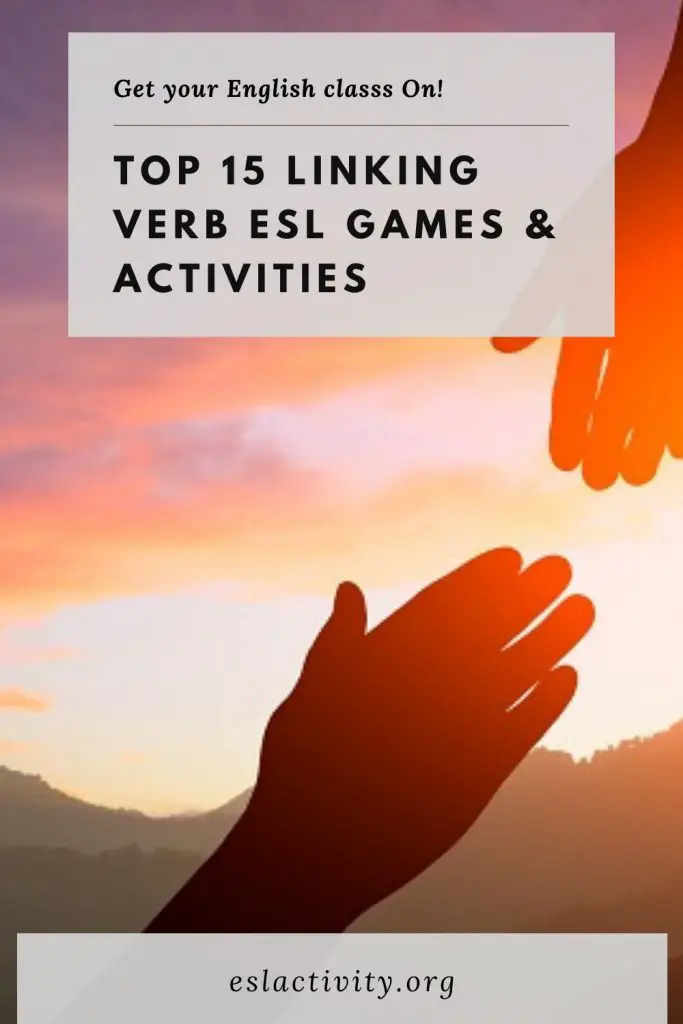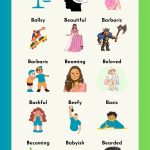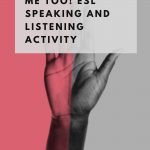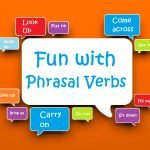If you’re looking for some of the top games and activities to teach helping verbs, linking verbs or auxiliary verbs, then you’re certainly in the right place. You’ll find the top linking verb games to consider, along with worksheets, lesson plans, online practice and more. In short, it’s everything you need to teach linking verbs and helping verbs in style!

Linking Verb Activities
What is a Linking Verb?
A linking verb is also known as an auxiliary verb or helping verb and the main function is to extend the meaning (expectation, potential, time, obligation, etc.) of the main verb in a sentence. They are used to make the more complicated verb tenses in English like the progressive and perfect.
ESL Linking Verbs Games and Activities
Let’s get into the best helping verb games and activities to try out with your students.
#1: Error Correction Relay Race
I love this relay race that takes something old (error correction) and makes it new again. It’s perfect for reviewing helping verbs too! Find out what you need to know about it in this article:
www.eslactivity.org/error-correction-relay-race/
It’s one of my favourite helping verb games so be sure to try it out with your students.
#2: Dictogloss
This is a versatile listening-focused activity that can be used for just about any grammar concept including helping verbs. The way it works is that you can find (or write) a passage filled with lots of linking verbs.
Then, read it out more quickly than normal for the level of students and they can take some brief notes. In pairs, they can work together to recreate what they just heard. Then, repeat the process again. Finally, students can compare what they have with the original version.
After that, highlight the use of auxiliary verbs and how they function within the sentences. More information here:
https://eslactivity.org/dictogloss-esl-listening-and-speaking-activity/
- Amazon Kindle Edition
- Bolen, Jackie (Author)
- English (Publication Language)
- 187 Pages - 03/09/2016 (Publication Date)
#3: Is that Sentence Correct?
A nice way to review helping verbs is to use this simple activity. Make some sentences filled with auxiliary verbs in them. Some have errors while others do not. Then, students have to decide which ones are incorrect and make the required changes. Learn more here:
https://eslactivity.org/english-grammar-activity-is-that-sentence-correct/
#4: Action, Linking and Helping Verb Vocab Auction
#5: Yes/No Question Activities
Yes and no questions require the use of helping verbs so they can be a nice way to introduce this idea to your students. For example:
Do you like to play soccer?
Are you going to eat dinner soon?
Here are some ideas for this topic:
ESL Yes/No Activities and Games.
#6: Concentration with Helping Verbs
This is a fun game that’s perfect for helping students remember new words. However, it can be easily adapted into a game that reviews auxiliary verbs. In this case, you’ll want to make some sentences with a blank in them where a helping verb would be. Then, on the other card, put that verb. For example:
- He _____ not go to school tomorrow (might)
- If I _____ rich, I’d buy a boat (were)
- Etc.
Then, in small groups, student play a matching memory game. Find out how to do it:
Concentration ESL Memory Game.
#7: Running Dictation
This is one of the most versatile ESL activities and can be used for just about grammar point or vocabulary set. It’s student-centred, covers a range of skills and the students really like doing it!
In this case, you’ll want to find a conversation (or write one) with lots of helping verbs in it. The textbook is often a good source for this. Then, students will have to work together to dictate the conversation and then put it into the correct order. Here are all the details you need to know:
#8: Reading Lesson Plan for Linking Verbs
A nice way to introduce linking verbs is through a reading passage (the other option is a listening passage). In this case, it’s certainly possible to design an entire lesson around a reading that highlights linking verbs. Sounds kind of overwhelming?
Not to worry! It’s easier than you might think to do this if you follow a lesson planning template like this one:
eslactivity.org/an-esl-reading-lesson-plan-template/
- Amazon Kindle Edition
- Bolen, Jackie (Author)
- English (Publication Language)
- 123 Pages - 06/05/2020 (Publication Date)
#9: Linking Verb Proof-Reading and Editing ESL Activity
A nice way to review just about anything is to do an editing kind of activity. Students have to read something carefully to find the errors.
In this case, you’d want to find (or make your own) worksheet with errors related to helping/linking verbs. For more advanced students, you might want to include other errors too, like other grammar, strange vocabulary choices, punctuation, etc.
You can find all the details in this article:
www.eslactivity.org/proof-reading-editing-esl-warm-up/
#10: Linking Verbs Videos
Maybe your students are a bit like mine and they get tired of hearing you talk by the end of the semester? That may not be the case, but I think it’s the normal for my students! If that’s the case for you, then consider letting another teacher deliver the information. Have a look on YouTube and there are plenty of excellent ones for any age or level.
#11: W/H Questions
W and H questions in English require the use of helping verbs in a big way. For example:
- When did you eat dinner?
- How are you going to get to school?
- Etc.
Learn more about the best activities and games to use to practice this with your students:
www.eslactivity.org/wh-questions-activities/
#12: Sentence Structures TEFL Activities
Time spent on sentence structure with English learners will never be wasted time! In the case of linking verbs, the correct word order in the sentence can be a little bit tricky, particularly with things like progressive tenses and negatives. If you want to help your students out with this, consider some of the following ideas:
TEFL Sentence Structure Activities.
#13: Mixed up Sentences with Linking Verbs
A nice way to focus on word order in sentences related to helping verb is to use this simple activity. Make some sentences with these verbs in them but then mix up the word order. Students have to work together in pairs to unscramble them. It’s also a nice homework activity.
Find out more about it:
eslactivity.org/mixed-up-sentences-english-grammar-activity/
#14: Likes and Dislikes ESL Activities
Likes and dislikes are all about using auxiliary verbs. For example:
- I like to play soccer.
- I don’t like to play tennis.
For some of the best ideas for teaching this beginner grammar concept, check out some of the top ideas here:
https://eslspeaking.org/likes-and-dislikes/
#15: Dialogue Substitution
#16: Dictation Practice for Auxiliary Verbs
I know that dictation has fallen out of favour a little bit with the more communicative approach. But, it can be a nice way to review new concepts and help reinforce things like spelling, punctuation and sentence structure.
In this case, dictate some sentences to your students that contain helping verbs. Be sure to include some contractions and negatives as students often struggle with these things. Find out more about it:
www.eslactivity.org/dictation-practice-esl-writing-and-listening-activity
#17: List of Verbs in English
If your students want to learn some of the most common action words in the English language, have a look at this great resource:

Helping verb games
Linking and Helping Verbs Worksheets
If you’re a TEFL teacher, I’m sure you love to save time, right? One of the best ways to do this is to use some worksheets that other teachers have made! They’re perfect for in-class practice or for homework assignments. Here are the top picks for linking verbs worksheets:
Online Practice for Helping Verbs
If your students want some extra practice with auxiliary, helping or linking verbs, then consider referring them to some of these top resources online:
Linking Verb ESL Lesson Plans
Another big way to save some time when teaching is use some ready-made lesson plans. Why do all the hard work if someone else has already done it for you? Here are some of our top picks for helping verb lesson plans:
FAQs
There are a number of common questions that people have about teaching this concept. Here are the answers to some of the most popular ones.
What are linking verbs?
Linking verbs are verbs that connect the subject of a sentence to a complement, describing or identifying the subject.
What are some examples of linking verbs?
Examples of linking verbs include “be” verbs (am, is, are, was, were), “seem,” “appear,” “become,” “feel,” “look,” “sound,” “taste,” and “smell.”
How can I teach linking verbs to ESL students?
Teach linking verbs by providing clear explanations, using examples in context, and engaging students in practice activities, such as sentence completion or matching exercises.
What is the importance of teaching linking verbs?
Linking verbs help students understand how subjects are connected to their descriptions or identities in a sentence, which is crucial for sentence structure and developing more complex sentence patterns.
How can I help students identify linking verbs in a sentence?
Teach students to look for words that connect the subject to a complement without showing action. Encourage them to analyze the function of the verb in the sentence and identify if it expresses a state, condition, or appearance.
How can I reinforce the usage of linking verbs?
Provide opportunities for students to practice using linking verbs in sentences or dialogues. Encourage them to create sentences that describe or identify a subject using appropriate linking verbs.
Are there any common misconceptions about linking verbs?
Yes, students may mistakenly think that all verbs that do not show physical action are linking verbs. It’s important to clarify that only specific verbs that connect the subject to a complement are considered linking verbs.
Can linking verbs change tense?
Yes, linking verbs can change tense to match the subject. For example, “He is tired” (present tense) can become “He was tired” (past tense) or “He will be tired” (future tense).
How can I provide additional practice for linking verb usage?
Assign exercises where students need to fill in the blanks with appropriate linking verbs, rewrite sentences using different linking verbs, or create their own sentences using linking verbs.
What are some common errors ESL students make with linking verbs?
ESL students may mistakenly use action verbs instead of linking verbs, overlook subject-verb agreement, or struggle with choosing the correct linking verb based on the subject and complement.
Did you like these Linking Verb Games and Activities?
- Amazon Kindle Edition
- Bolen, Jackie (Author)
- English (Publication Language)
- 112 Pages - 10/24/2019 (Publication Date)
Yes? Thought so. Then you’re going to love this book that you can find over on Amazon: 39 No-Prep/Low-Prep ESL Grammar Activities. The key to better English grammar teaching is a wide variety of interesting, engaging and student-centred games and activities and this book will help you get there in style. The best part is that all the activities require almost nothing in the way of preparation!
You can easily find the book in both digital and print formats. Consider keeping a copy on the bookshelf in your office to use as a handy reference guide. Or, take the e-version with you to your favourite coffee shop for some lesson planning on the go. It really is that easy to have better English classes.
Head over to Amazon to pick up a copy of the book today, but only if you want a serious dose of some ESL teaching awesome in your life:
Have your Say about ESL Linking Verbs
Do you have any tips or tricks for teaching helping verbs ESL? A game or activity that you’d like to share with us? Leave a comment below and let us know what you think. We’d love to hear from you.
Also be sure to give this article a share on Facebook, Pinterest, or Twitter. It’ll help other busy English teachers, like yourself find this useful resource.
Last update on 2022-07-17 / Affiliate links / Images from Amazon Product Advertising API







